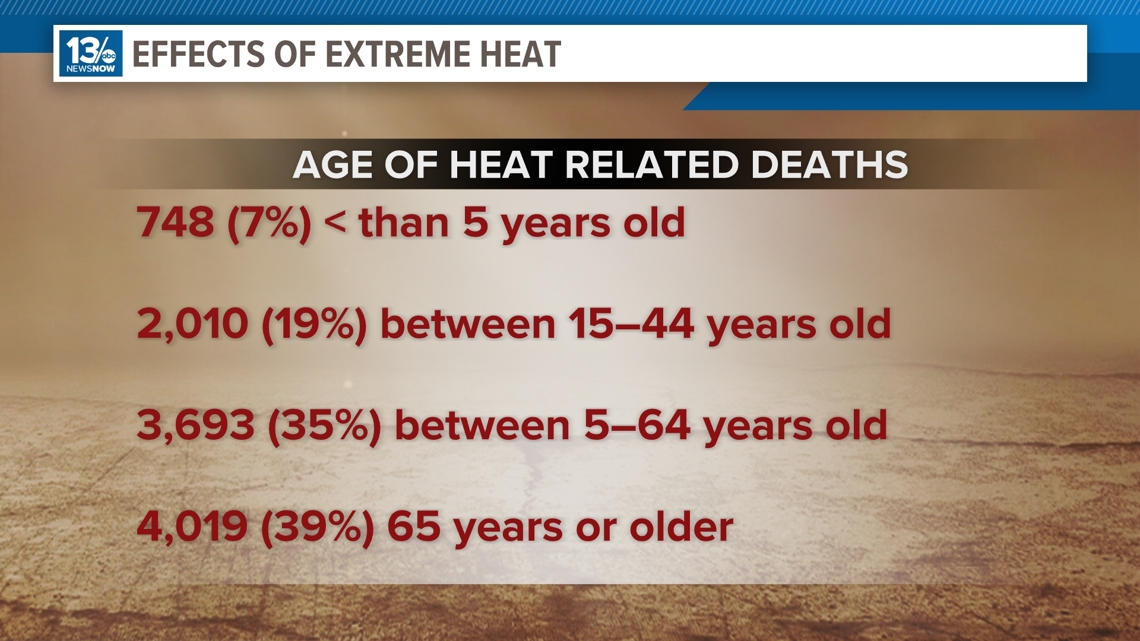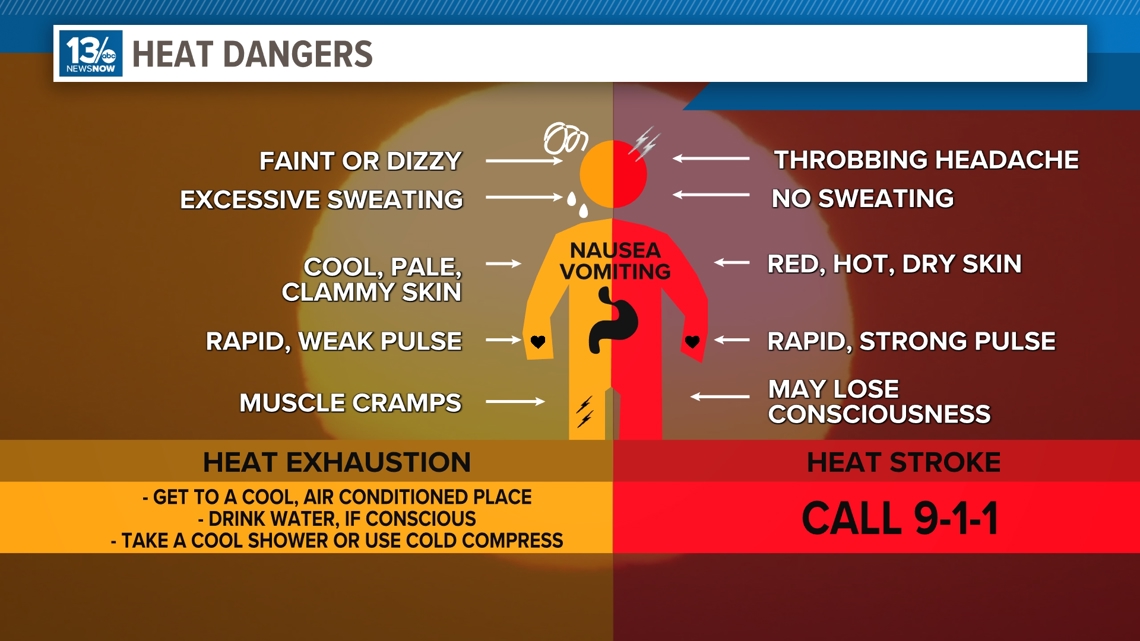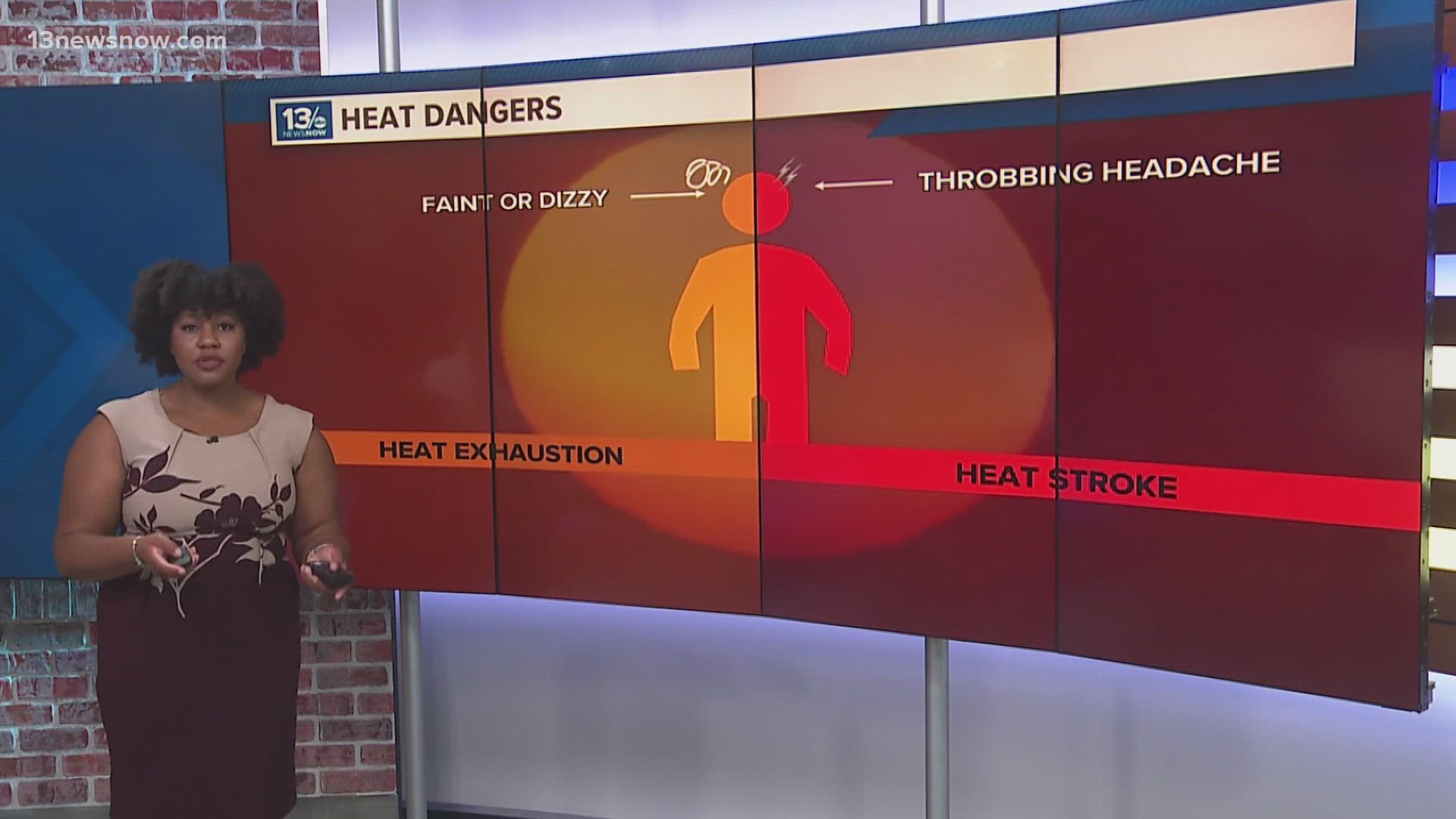NORFOLK, Va. — As we head into the middle of summer, we start to get used to the hotter temperatures and muggier weather, but it's always important to stay vigilant even if we think we're used to the excessive heat.
Heat is often underestimated as a weather-related killer, but it is actually the deadliest weather phenomenon in the United States. According to the CDC, in 2021, 1,600 U.S. heat-related deaths occurred in total.
Take hurricanes, for example: in 2021, 68 fatalities were reported and for tornadoes, there is an average of 71 deaths per year in the United States.
A study that was conducted from 2004 to 2018 concluded that there was a total of 10,527 deaths resulting from exposure to heat-related conditions.
Taking a closer look at the study, 70% of all heat-related deaths occurred in males, and deaths among males outnumbered those among females in all age groups except infants less than a year old.
Out of the 10,575 deaths, there were 10,470 people who had age information and from this, it's clear that heat-related deaths do not exclude any age group. From the study, 748 (7%) were less than 15 years old, 2,010 (19%) were between 15–44 years old, 3,693 (35%) were 45–64 years old, and 4,019 (39%) were 65 years or older.


We often say that extreme heat can cause illnesses such as heat stroke and heat exhaustion, but it can also increase the risk of other things.
As the temperatures start to rise, and your body temperature rises with it, your cardiovascular system can be put under extreme stress and in turn, makes the heart work harder leading to an increased risk of a heart attack, especially in people with pre-existing heart conditions.
Even healthy individuals are at risk of heat exhaustion or heat stroke, which can quickly turn fatal without prompt intervention.


Unlike dramatic weather events like hurricanes or tornadoes, heat is a silent killer; if people are not paying attention, things can quickly take a turn.
RELATED:

